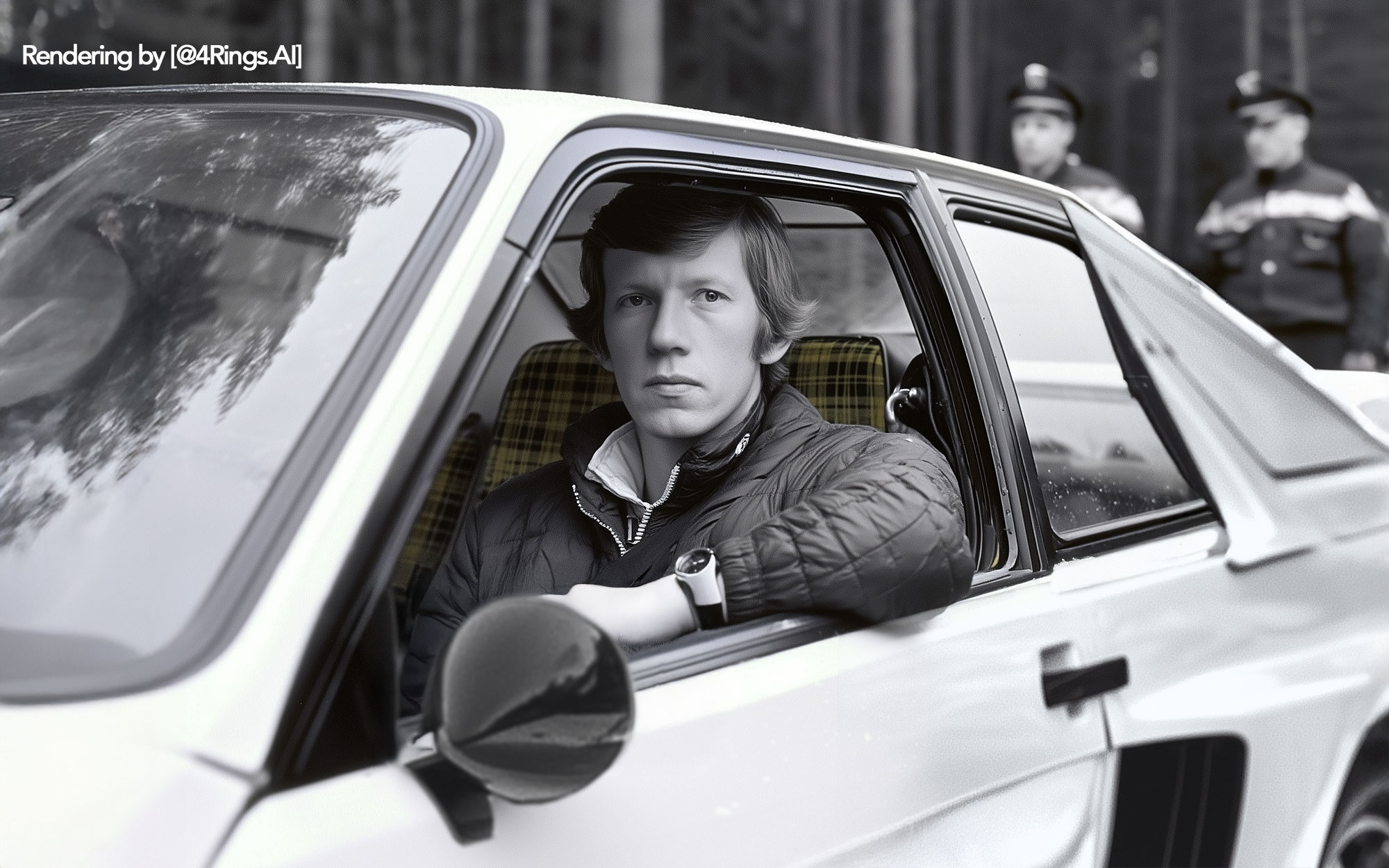Editor’s Note: If you’re just picking up this story, this is Part 6 in a longer series on this subject. Find a master link to the full Mittelmotor Saga HERE. Also please note, this story uses images that are AI renderings. Actual photos do exist from the day, which have been posted to other stories sourced for and linked in this story.
Given the secrecy of the mittelmotor project and the most obvious point of exposure being the RS 001 test car itself, it is perhaps fitting that the retelling of the car’s short life testing is one of the most enigmatic.
The RS 001’s emergence from behind the veil of corporate secrecy was such a pivotal moment with such limited detail that it is probably a foregone conclusion so many rumors contributed to wide variations of the story fueling the mittelmotor lore. Some tales suggest the photos from the Czechoslovakian test sessions were the point of exposure, and though those grainy photos eventually did emerge decades later, we know these aren’t the shots that brought the program into the spotlight and spelled its doom.
It’s what happens in this next installment of this series where there is perhaps the most confusion. In the researching of this story, I’ve read most accounts and have landed on what I believe is the most likely scenario. Should new details emerge, I’ll do my best to keep this updated.
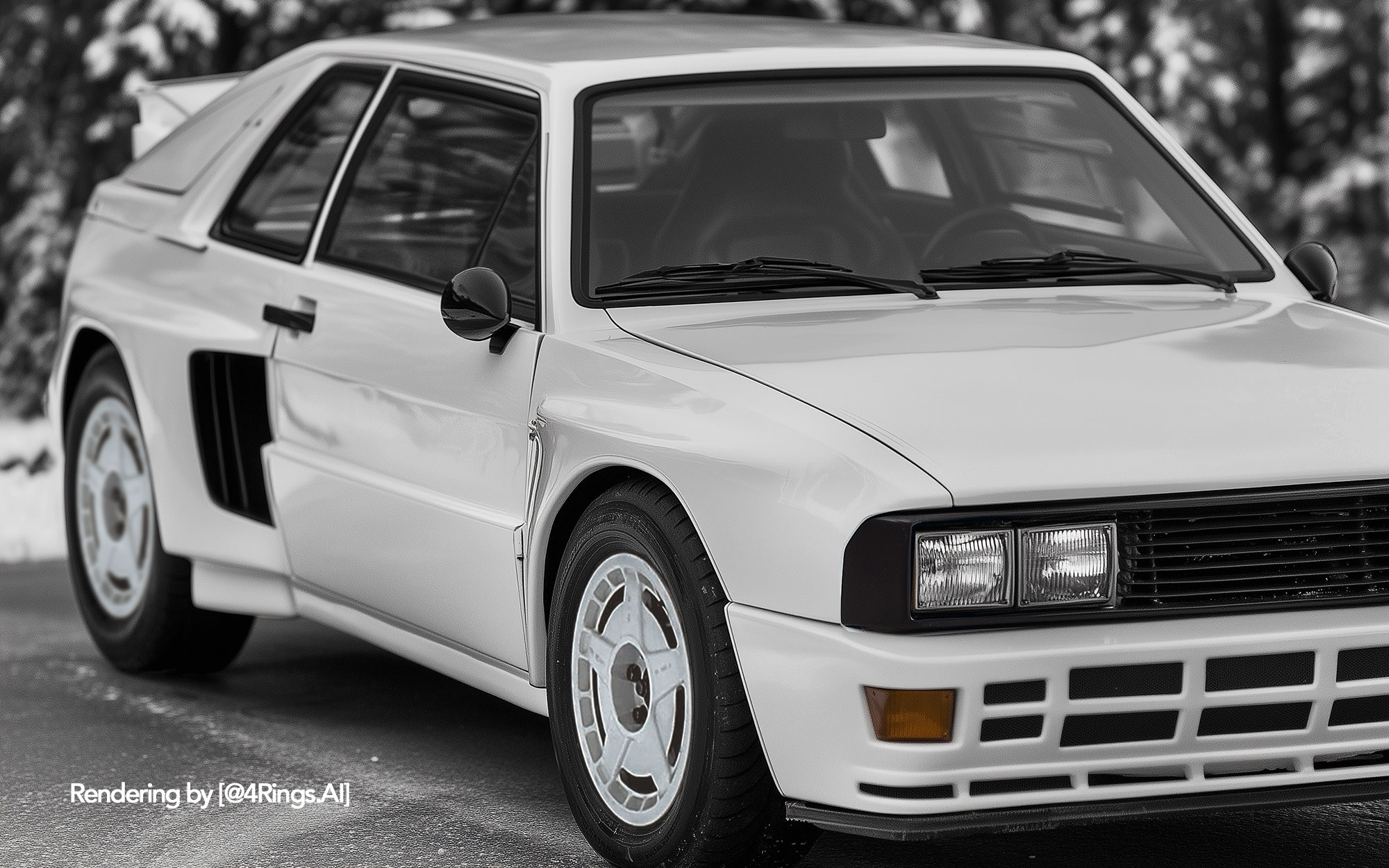
Diverging Rumors of the Second RS 001 Test
Most retellings say the Audi Sport team first traveled to Salzburg, Austria for a prearranged test, encountered photographers in the test area and aborted. As this version goes, the group turned their trucks around before ever unloading the car and only stopped on the way home back in Germany in order to let Walter Röhrl have a go on German back roads. That’s only part of the story though and many more details have now been learned via German language resources that help bring this piece of Audi history more into focus.
It is the period following the tests of the RS 001 in Czechoslovakia where we pick back up with the timeline. Roland Gumpert and his project team working on the RS 001 were energized. The prototype’s display at the test had made it obvious to the precious few monitoring the car’s progress that Audi was on the right track. In a 2005 story for MotorSport Magazine, Gumpert shared, “It was pretty much quicker straight away. The engine was just as strong, of course, but the handling was much better just because of the weight distribution. We knew we had more work to do, but it did not take too many tests before we felt it was ready to allow Walter Röhrl behind the wheel.”
The task of planning the next test would fall on Günther Classen. Claasen, who’d previously spent four years at Volkswagen do Brasil, had returned to Germany seeking a new role. Gumpert hired him on to act as project manager for the construction of the mid-engine quattro test vehicle and so the RS 001 mule was effectively his baby.
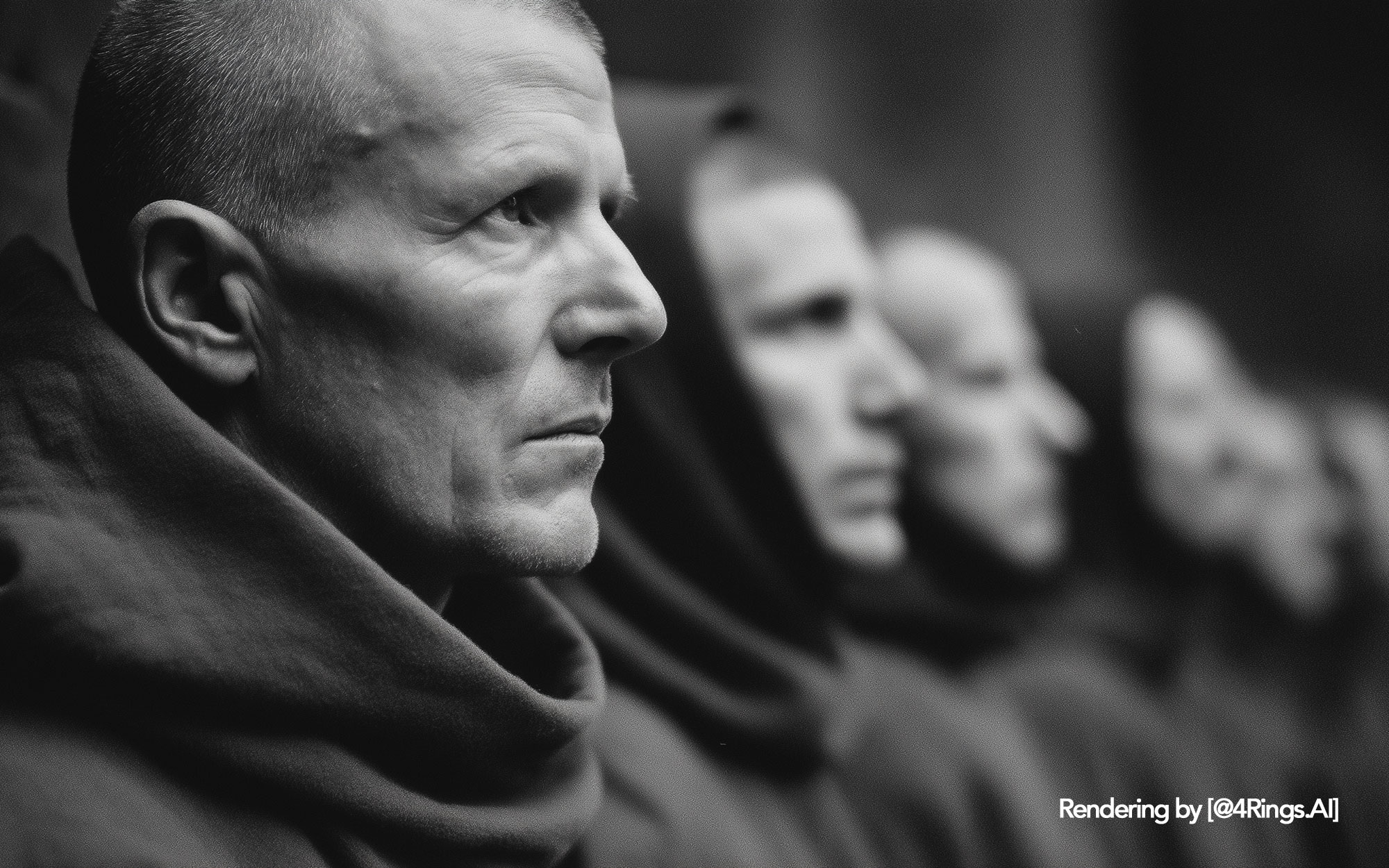
Hear No Evil. Did the Monks Cover their Ears?
By March 1985, plans for the next test had taken shape. As told in a story by Curbs Magazine, Claasen had secured commitment from the abbot of the Stift Rein Cistercian monastary to be able to test within their fenced forest grounds outside the small town of Gratwein, Austria.
Though the new test location wasn’t securely behind the iron curtain as the Czech tests had been, the new location was still remarkably obscure and secure. Testing on the grounds of a monastery would be well protected. At the same time, Gratwein was in the far south of Austria. Effectively a suburb of the city of Graz, it also wasn’t far from the northern border of communist Yugoslavia.
Within the grounds of the monastery, Claasen had identified a suitable stretch of gravel roads where the car could be adequately run. Arrangements were made, the RS 001 was loaded onto a transport and the team of engineers prepared for travel to Gratwein.
This is one point of divergence in the lore. Retellings often point instead to the area around Salzburg as the test location. Looking at a map, the monastery is roughly 460 km from Ingolstadt. If you traveled the more southerly route today, by way of Salzburg, you’d only be about halfway to Gratwein if you stopped along the route near Salzburg for a coffee. That’s notable though, so let’s come back to that.
Arriving in Gratwein, the first day of testing at the monastery began with test driver Franz Walter Mayer set to put it through its first day of tests. An Austrian rallycross champion in his own right, Mayer suggested they pause the test according to the account told by Walter Magazine. It seems the RS 001 had been fitted with gravel tires and there on the ground at Gratwein it was actively and heavily snowing. Accordingly, the team are said to have made two calls – the first for a truck to deliver Michelin tires proper for such conditions. The second call was to Walter Röhrl who was scheduled to arrive the following morning, instead instructing him to delay his travel to Gratwein.
Just how much testing was completed that day isn’t entirely clear. However, the sounds of the car’s engine wail slicing across the snow-covered serenity of remote southern Austria drew the attention of locals, apparently including local reporters. This challenge seemed to be a recurring theme, following the Audi Sport team from the very beginning and its earliest tests of the quattro rally car in Italy years before.
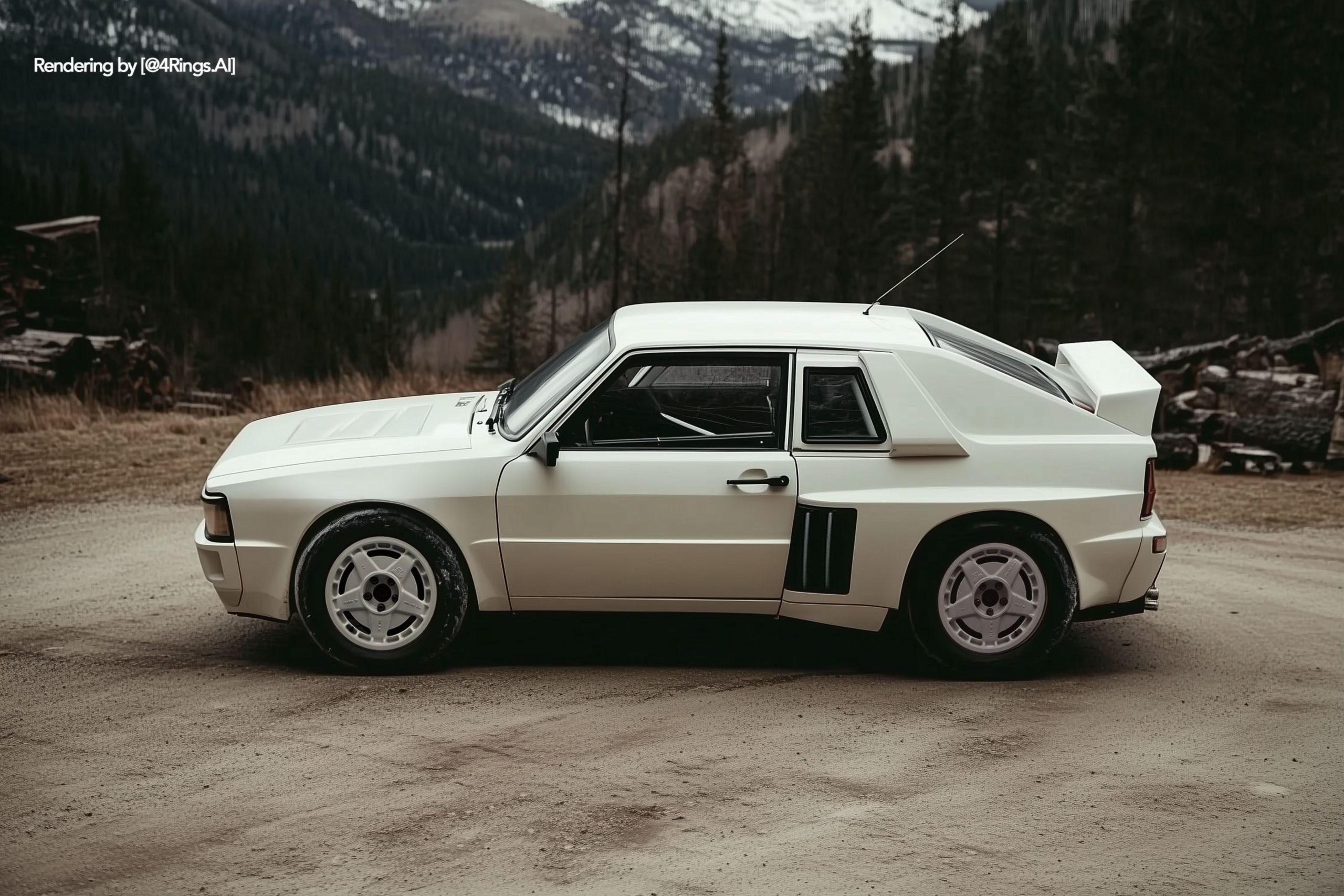
Caught & Coffee
It’s at this point in the story that an unfortunate and particularly ill-advised decision was made to drive the mittelmotor prototype out of the secure grounds of the monastery and through the sleepy village, presumably headed to a public gas station for refueling though the bakery rumor attributed to the Dešná test also seems as if it could have stemmed from this moment. Whatever the reason, “We vehemently advised against it, but it was approved,” stated the car’s engine mechanic Karl Hasenbichler in Curbs.
The details revealed by Curbs further set the scene. Photographer Eckhardt Herget, acting upon a tip (more on this later) nabbed five photos of the car when test driver Franz Walter Mayer cruised down what looks like a perfectly public amidst driving snow. In the background of the shots of the car as it passes, you can clearly see a bank and road signs that confirm the location as Gratweing . It’s pretty obvious the car was neither in Czechoslovakia nor Salzburg when it was caught.
So, how did Herget the photographer know the car would be there? While the idea that he was simply drawn in by the siren sound of the Group B-spec 5-cylinder rally engine at full song harks romance sung in engine notes, Roland Gumpert believes otherwise. “I was told that the son of an Audi press employee tipped off the Austrian press in return for money,” he states in his autobiography. Even that reads like a rumor. However, when it’s recounted by the then acting head of Audi Sport, it deserves a bit more credence. For what it’s worth, Gumpert’s biography is the only place I’ve found mention of the press employee’s son.
By whatever method the photographer learned about the presence of the RS 001, photos still appeared the next morning under the headline “Audi Let the ‘New’ Out” in the Kleine Zeitung, a local Austrian newspaper based in Graz. The story’s author Gerhard Nöhrer shared with Curbs, “We didn’t know at the time how explosive the car was and what consequences the publication of the photos had.”
No doubt the team conversation at breakfast the next morning wasn’t pleasant. The group of engineers were in for quite a surprise. In this version of the story, Günther Claassen ended the tests immediately and notably before Walter Röhrl could arrive to drive the car. The RS 001 was hastily loaded back into the van and the group set out to return home.
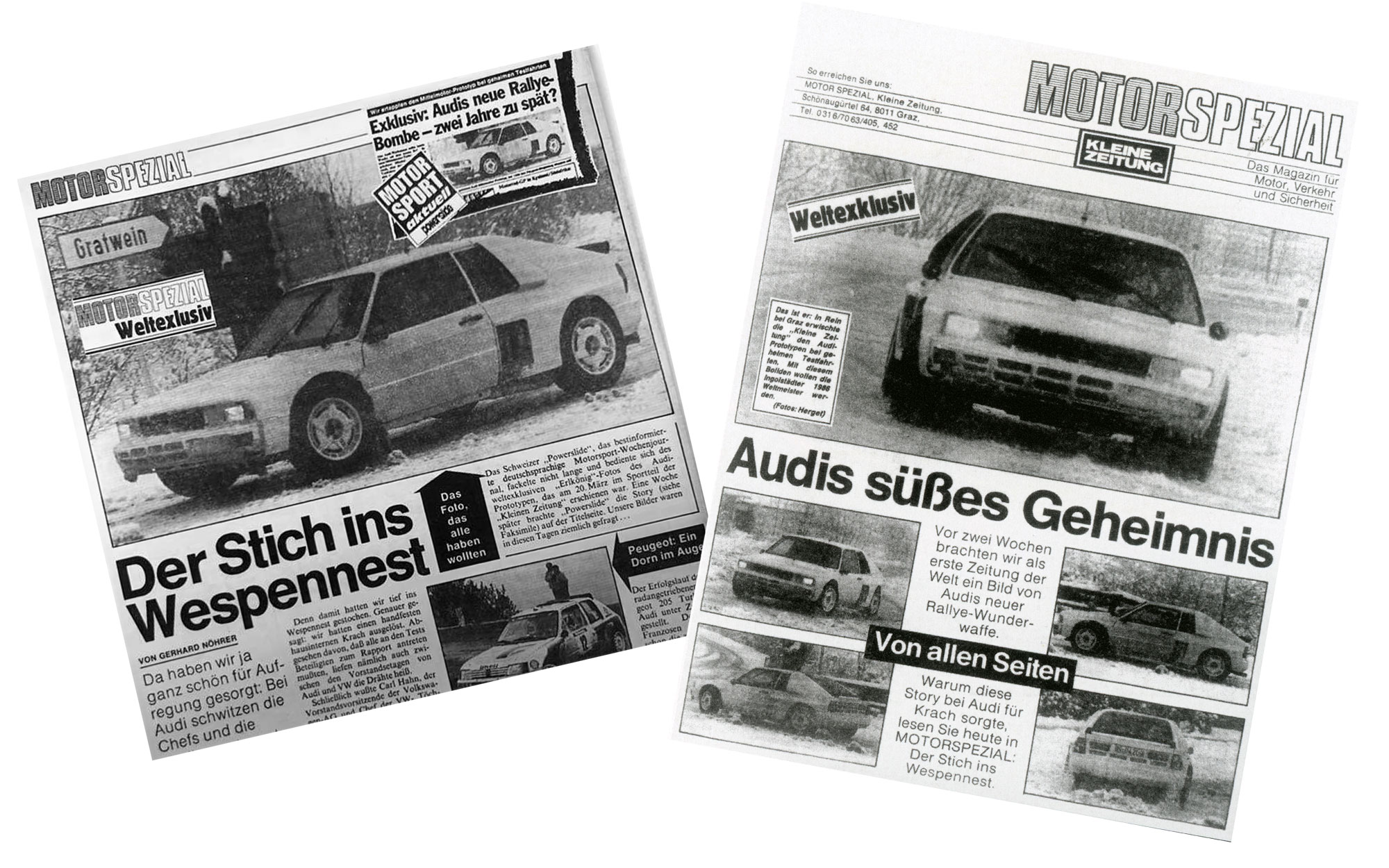
Walter Wants Seat Time & Makes a Call
It’s not clear when Walter Röhrl made contact with the team. Likely they’d have called him in order to let him know what happened and to delay his trip even further, if he would end up coming at all. It’s likely then that Röhrl informed them he still wished to drive the car. Günther Claassen agreed and the plan was set to meet Walter near Freilassing, Germany where he could sample the RS 001 before they made their return.
So, it is here that the Salzburg references begin to make sense. Though Freilassing is technically in Germany, the town sits just eight kilometers north of Salzburg and is in fact one of the Austrian city’s largest suburbs.
Given the proximity of time just one day later, the location along the route back to Ingolstadt and the oh-so-tight leash on the RS 001, that the convoy likely stopped to meet Röhrl on their way home seems the most logical. Perhaps they figured they could salvage the test by providing Walter time with the car. If they were to be outed and the project was endangered, then maybe the celebrity of Audi’s most popular World Champion driver could help salivate the mittelmotor project and keep the momentum they had going.
In Freilassing, the group chose an unknown stretch of secluded Bavarian asphalt. Röhrl recounted the test to MotorSport Magazine f0r their 2005 story, “They were so keen for me to try the car that they found the bit of open road, took out the car and we went for it. Nobody was expecting that, of course.”
The RS 001 was rolled out of the truck and Röhrl climbed aboard the car, smaller and lower than the Sport quattro he’d been racing in the World Rally Championship. Likely he’d been somewhat prepared for an even tighter cabin though, as it’s believed he’d already seen the small round cabin shaped around his stature of the RS 002 during the design process. The German fired up the RS 001 and headed off down the secluded road.
And Then the Cops Came. Busted + Burnouts
Immediately, Röhrl was impressed. “I could tell straight away how much better it was. The road was just old asphalt – normal second-category roads, with a bit of twisty stuff and some fast sections. The impression I got was really good – as good as the quattro Sport E2 straight away, in fact. Many times, I’ve had cars which you have tested for 40 days to get the same level as the old one. But this one was really impressive. The engine felt the same because it was just out of the Sport quattro E2, but the handling made all the difference for me. It was so much better in the twisty stuff and it didn’t get twitchy when the corners got faster.”
As remote as this location may have been, the wail of the 5-cylinder engine drew unwanted attention yet again. “After 40 or 50 kilometers,” Röhrl shared with MotorSport Magazine, “I came over a brow and saw the police. I stopped and asked them, ‘Why are you here? Did you know I was coming along this road?’ and they said, ‘No, we didn’t know in advance. But we’ve heard you coming for the last 10 minutes!’”
The constables were surprised and delighted when they realized they’d pulled over a rally World Champion and wanted a photo of Röhrl and his prototype car. Knowing that public exposure would only heighten the chances of doom for the program, Röhrl begged them not to take the photo. “So they said, ‘Okay, Mr. Röhrl, you can go and we won’t take any pictures. But first we want to see you do a proper race start!’”
Proper race start meant burnout… or as close to a burnout as one might imagine with an all-wheel drive rally car. In that request, Röhrl did not disappoint. He described the moment succinctly in Walter Magazine, stating, “The car went like hell and was extremely loud.”
By Röhrl’s own assessment, the day was a good day. Unfortunately, it wasn’t good for everyone. According to Gumpert’s autobiographical recount, Piëch was furious that news had broken.”
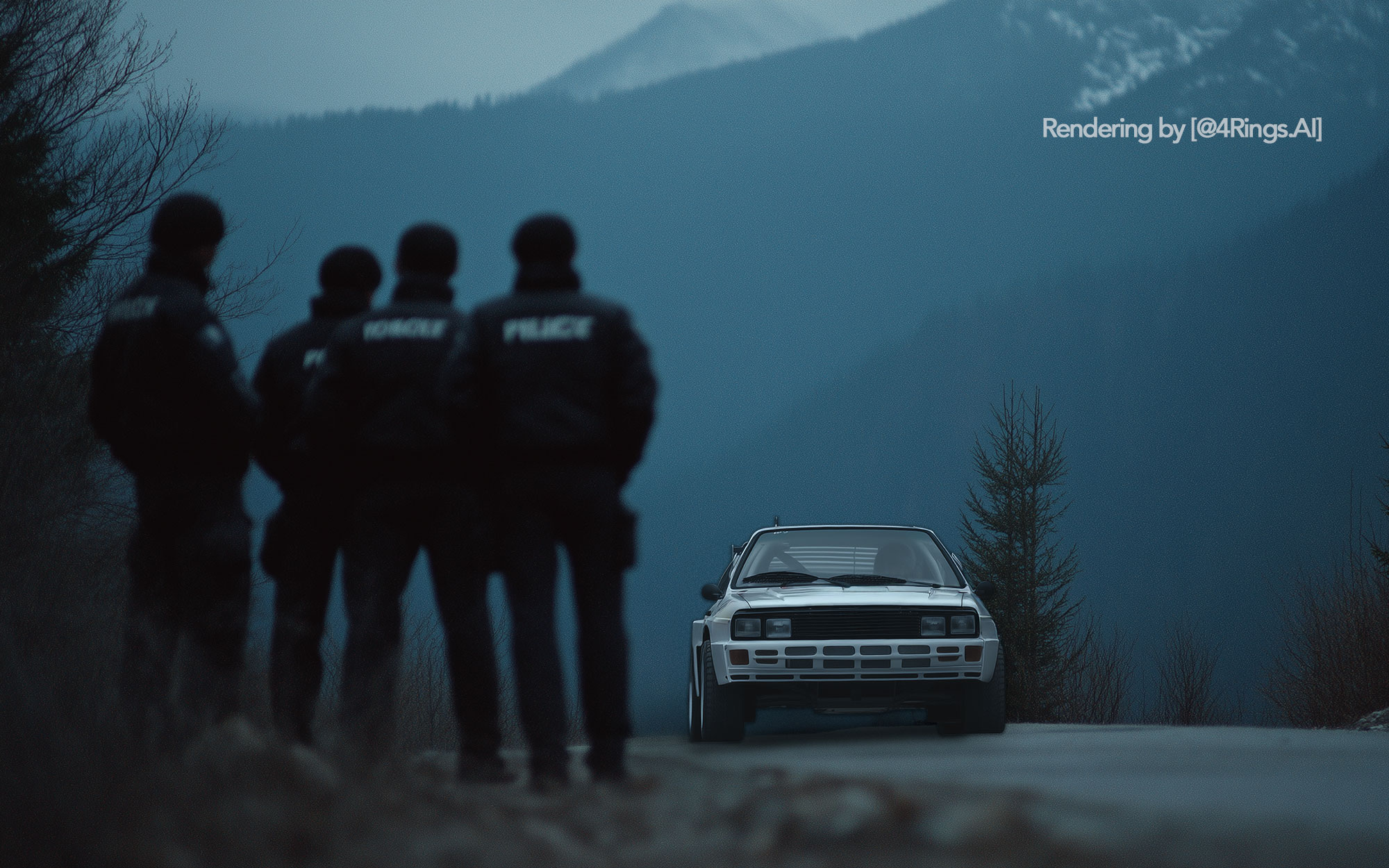
Piëch’s Problems: Politics
In the immediate aftermath of the Kleine Zeitung article publishing, Piëch’s team at Audi moved quickly to purchase the negatives from the newspaper for a handsome price. Unfortunately, it was too late. The photos began to appear in other media outlets in short order. Keeping the mittelmotor program hidden was becoming an impossibility, and the pain of this exposure reached the highest levels.
Even in these early days of his long and legendary career, Ferdinand Piëch seldom lost. He always seemed to have an answer and exhibited little weakness in his work. If he had one Achilles heel then, it was perhaps his aspirations. Piëch had visions of taking over the entire Volkswagen Group, and operating this secretive Audi rally project on the down low without board approval compromised him.
Of course, this wasn’t the first time Ferdinand Piëch done such a thing. He had a charm and a disruptive way about him that made things happen outside of the common hierarchy. It’s said the entire quattro project originated from an off-the-books maneuver. No doubt his allies tolerated Piëch’s unconventional methods when obvious results were attached. However, when the board already seeking an end to expensive rally program read about an Audi mittelmotor test mule that wasn’t supposed to exist on the cover of a newspaper, the patience had worn thin.
The Volkswagen Board in Wolfsburg was not pleased. Volkswagen AG CEO Carl Hahn demanded Piëch explain himself why the mittelmotor project had proceeded despite his assurances that it would not.
Roland Gumpert set the scene in his book, “In Wolfsburg, they told him: ‘If you want to become chairman of the board, then put a stop to this! You know that we have decided not to build any more rally cars!’”
Piëch wanted to be CEO. So, his hand was forced. He instructed the team to scrap everything. According to the MotorSport Magazine account, less than 48 hours after the photos appeared, the mid-engine prototypes apparently met their fate. If it was truly happened that quickly is a matter of debate, but it seems fairly certain this took no longer than a week.
Crushed Cars and Crushed Dreams
Ferdinand Piëch personally watched as the cars were dismantled then crushed. Likely his doing so was less out of personal outrage or vengeance and more about putting in appearances. Regardless, the Volkswagen Board wanted the mittelmotor cars gone, and no doubt there would have been plenty of individuals at all levels of knowledge of the project who would have been highly motivated to step in and save them given their significance. No doubt anyone reading this series romantically wishes someone at the time could have stepped in and spirited an RS 001 away, tucking it neatly in a garage where it would disappear for decades.
How many cars were destroyed? Here again, the story varies, though my best guess is two. Whether or not the car tested in Czecheslovakia is the same car tested in Austria is frankly unclear. A close scrutiny of the remaining photos of each car show some extremely minor differences. The Austrian test car wears a registration tag of “IN 4290” whereas the car present at the Czech test wears no registration tags at all, instead sporting JZD Slušovice logos on the doors and the hood. The Czech car also appears to have some slight side sill bodywork not seen on the Austrian test car. And while the same car could have evolved in the time between the two tests, most stories told of the RS 001’s ultimate destruction point to multiple cars being crushed.
Alas, the mittelmotor cars weren’t the only things crushed that day. Even if it hadn’t been announced yet, the Volkswagen Board had effectively signaled via this action that Audi’s rallying era would be ending.
Naturally, those closest to the project felt the despair most vividly. For Günther Classen, having to personally explain Ferdinand Piëch how he could have possibly let his car be photographed was an incredibly stressful experience. Two weeks after the cars were destroyed, Günther Classen died of a heart attack at the age of 43.
Walter Röhrl also shared his thoughts in the 2005 MotorSport piece, “I was so disappointed. I only had one test with the car and did maybe 180 kilometers in total, but I knew even with that distance that it would have made Audi more competitive.”
Roland Gumpert revisits his own mindset in his autobiography. “Looking back, the mid-engine quattro may have really been the reach for the stars of rallying; we would have been unbeatable for years. And the madness would have continued.”
Worse for Gumpert, his days running the rally team were numbered. He’d be there until the end of the season. Audi announced its withdrawal from rally just after the Portugal race in early March, perhaps not coincidentally around the same time as the tests. The official reason for the withdrawal was attributed to the dangerousness of Group B. And, even if Group B had continued, it was clear the Sport quattro was no longer competitive with purpose-built prototypes like the Peugeot 205 T16, the Lancia Delta S4… and the yet-to-be-named Audi mittelmotor.
Following a technical abandonment due to faulty brake components during the Corsica Rally in May, Piëch approached Gumpert about making a change. Though Roland Gumpert saw it as a firing, he was perhaps more accurately reassigned.
“I have a great new job for you, Gumpert. You’ll be Head of Technical Development Overseas. What do you think?”, Roland Gumpert recounts.
“I thought about it. It hurt my heart to leave that adventurous time behind me. I had always been a practical person, and I still am today. Few sporting directors of major car companies are found with oil-stained hands right at the front. I loved it; I knew the cars like the back of my hand, and I loved the temperament of the drivers, that rare mixture of daredevilry and precision.”
Ultimately though, Gumpert accepted Piëch’s offer and left the sport.
Alas, the story didn’t end here for the Mittelmotor project or even the Group S. Yes, development ended and Audi most definitely left the WRC, but everything was not lost. It’s on this last point that Roland Gumpert lends some key insight, this time to MotorSport Magazine in 2005. “Let’s say this – all of the cars that were officially built were destroyed. Dr. Piëch oversaw that personally. But there was another car that was at an advanced stage that maybe wasn’t official. Nobody even knew it existed. I think it was worked on somewhere else, maybe Neckarsulm. Perhaps we didn’t even tell Dr. Piëch that it existed…”
NEXT UP PART 7: S IS FOR SURVIVOR, THE RS 002 PROTOTYPESOURCES
BOOKS AND ARTICLES USED IN THE MAKING OF THIS STORY
Ohne Limit by Roland Gumpert – Autobiography in (German)
Audi’s Group S Prototype: The Lost 1980s Rally Monster – MotorSport Magazine – Magazine Article (English)
Streng geheim – Curbs Magazine – Magazine Article (German)
Das gut gehütete Audi-Geheim nis. – Walter Magazine – Magazine Article (German)


